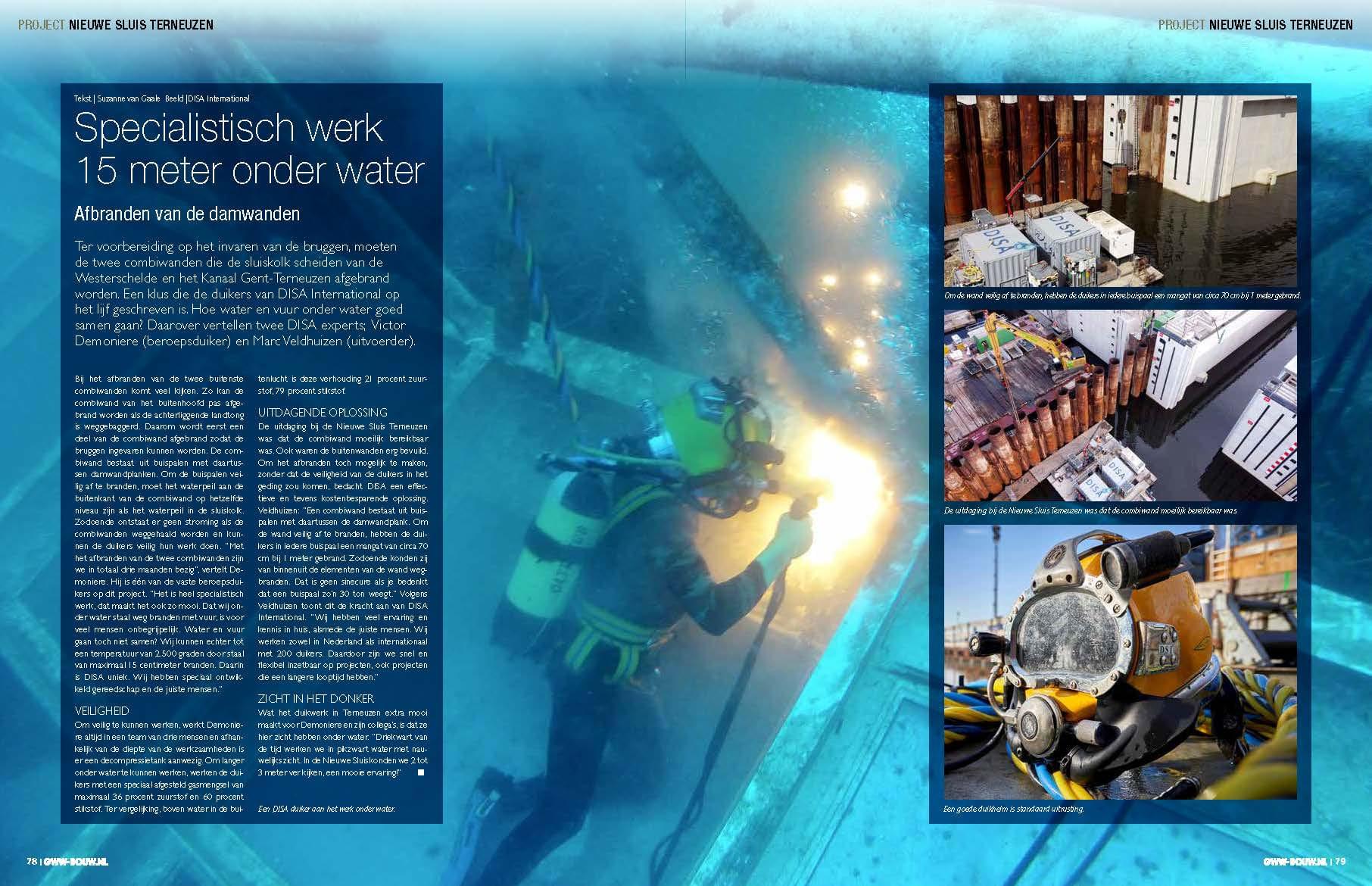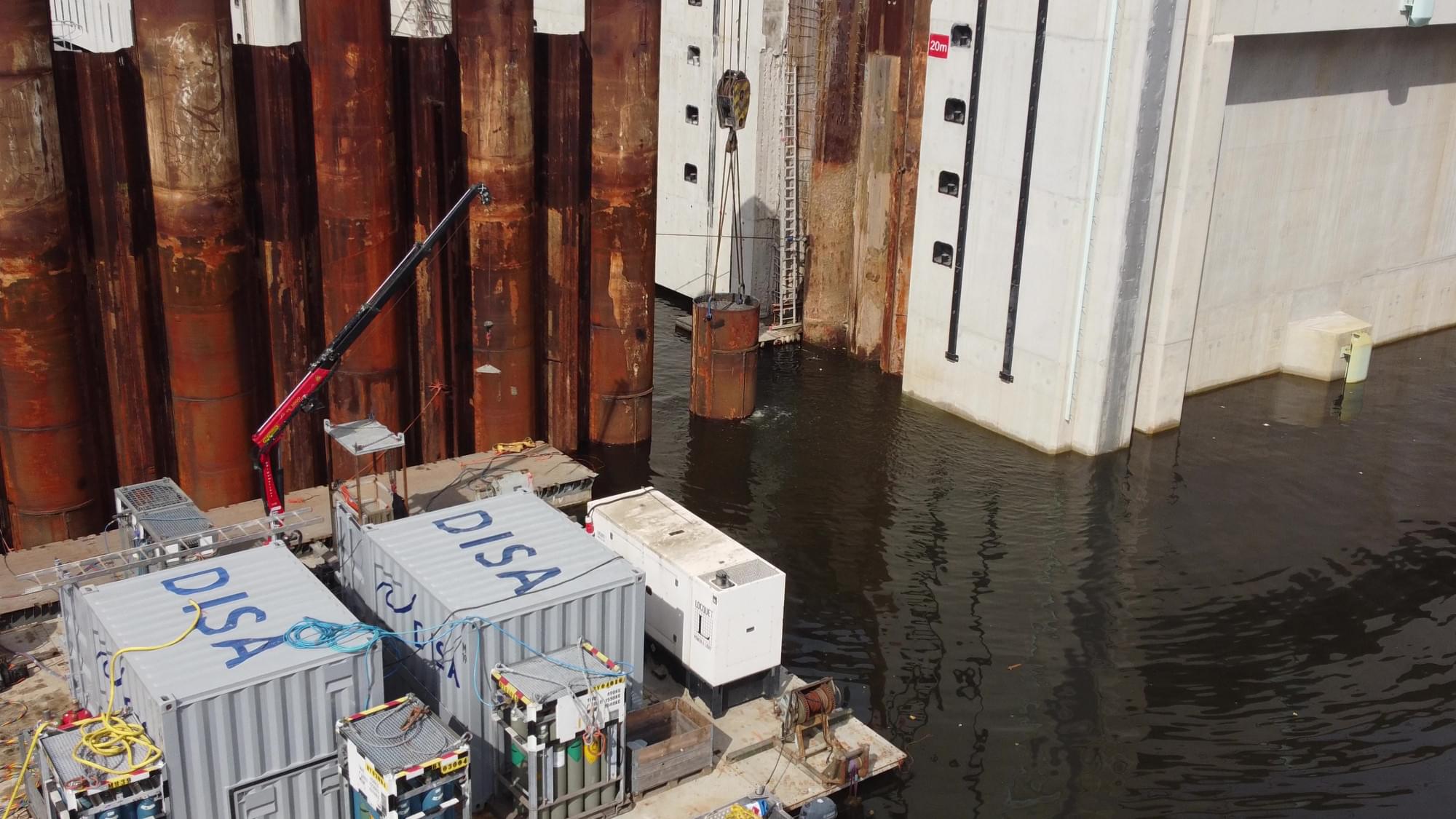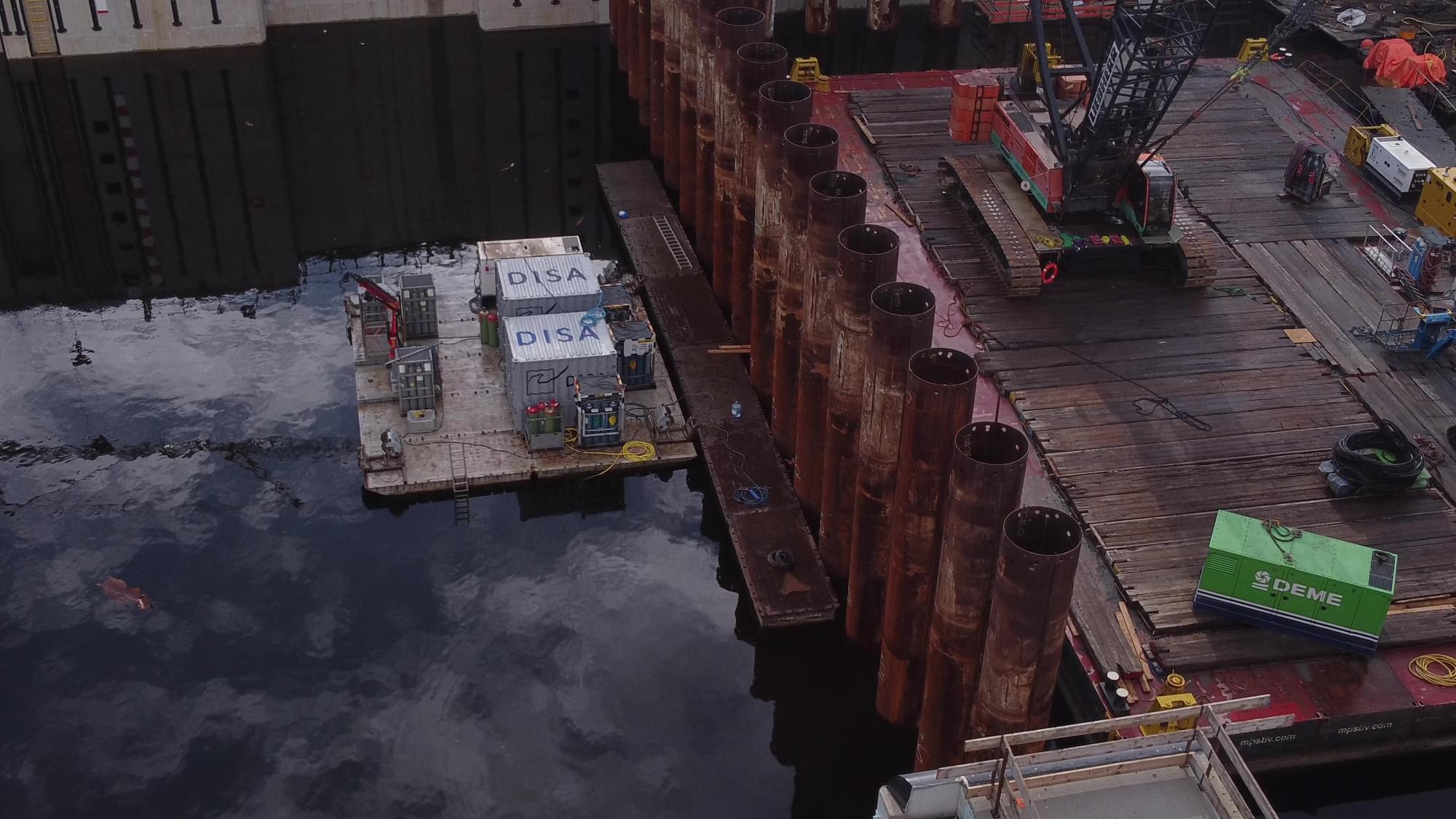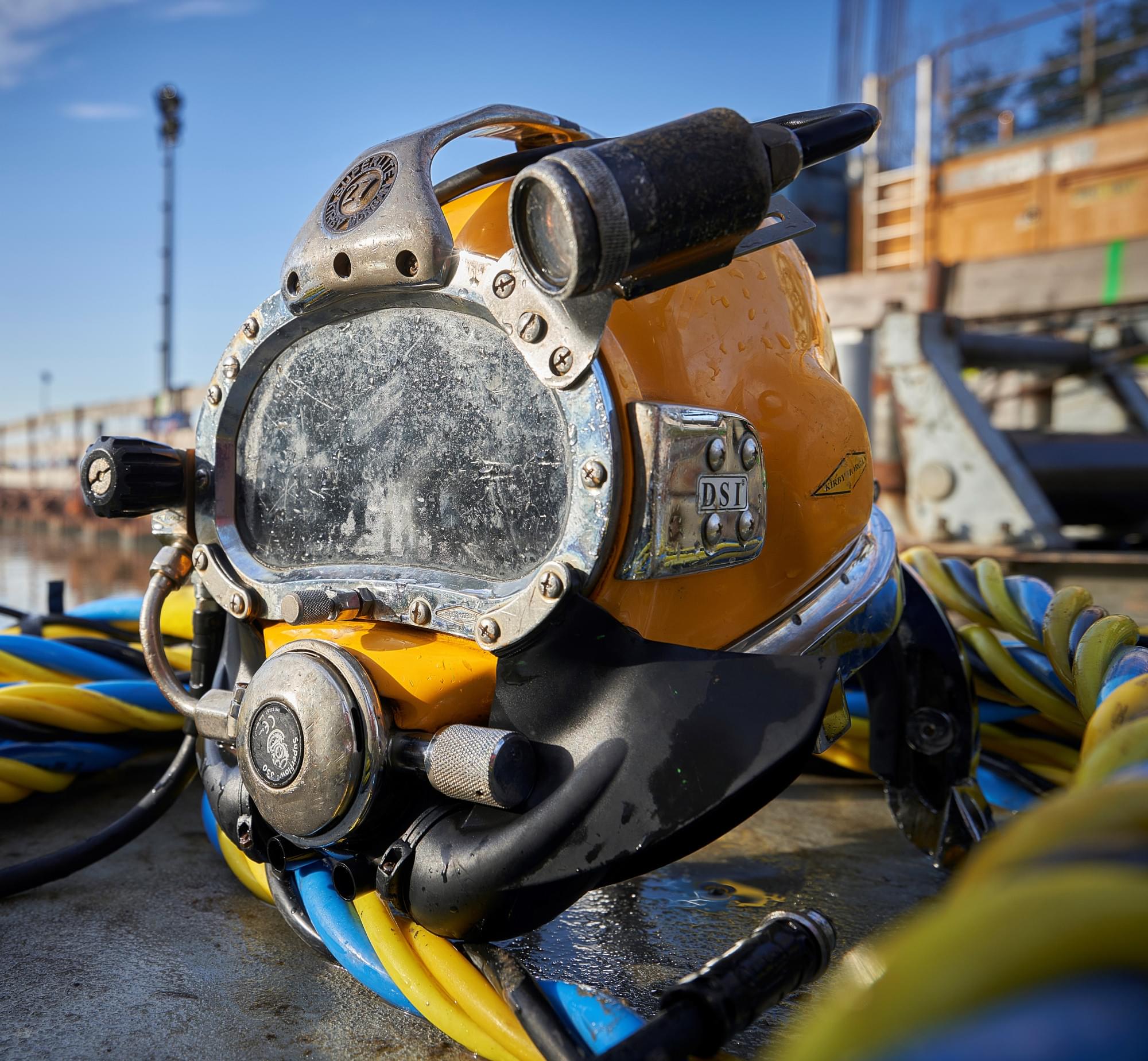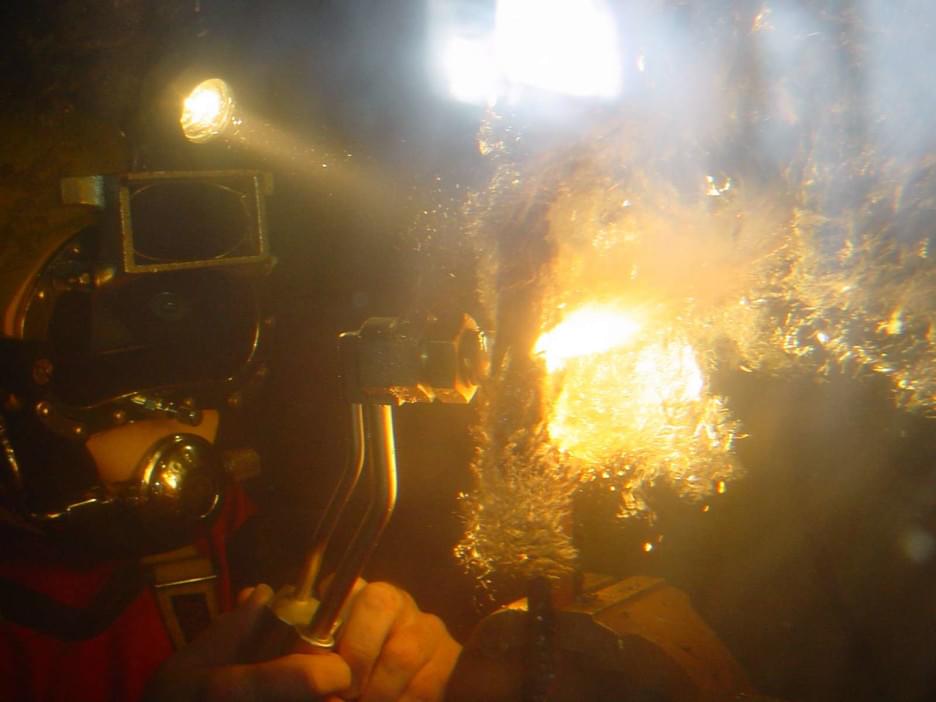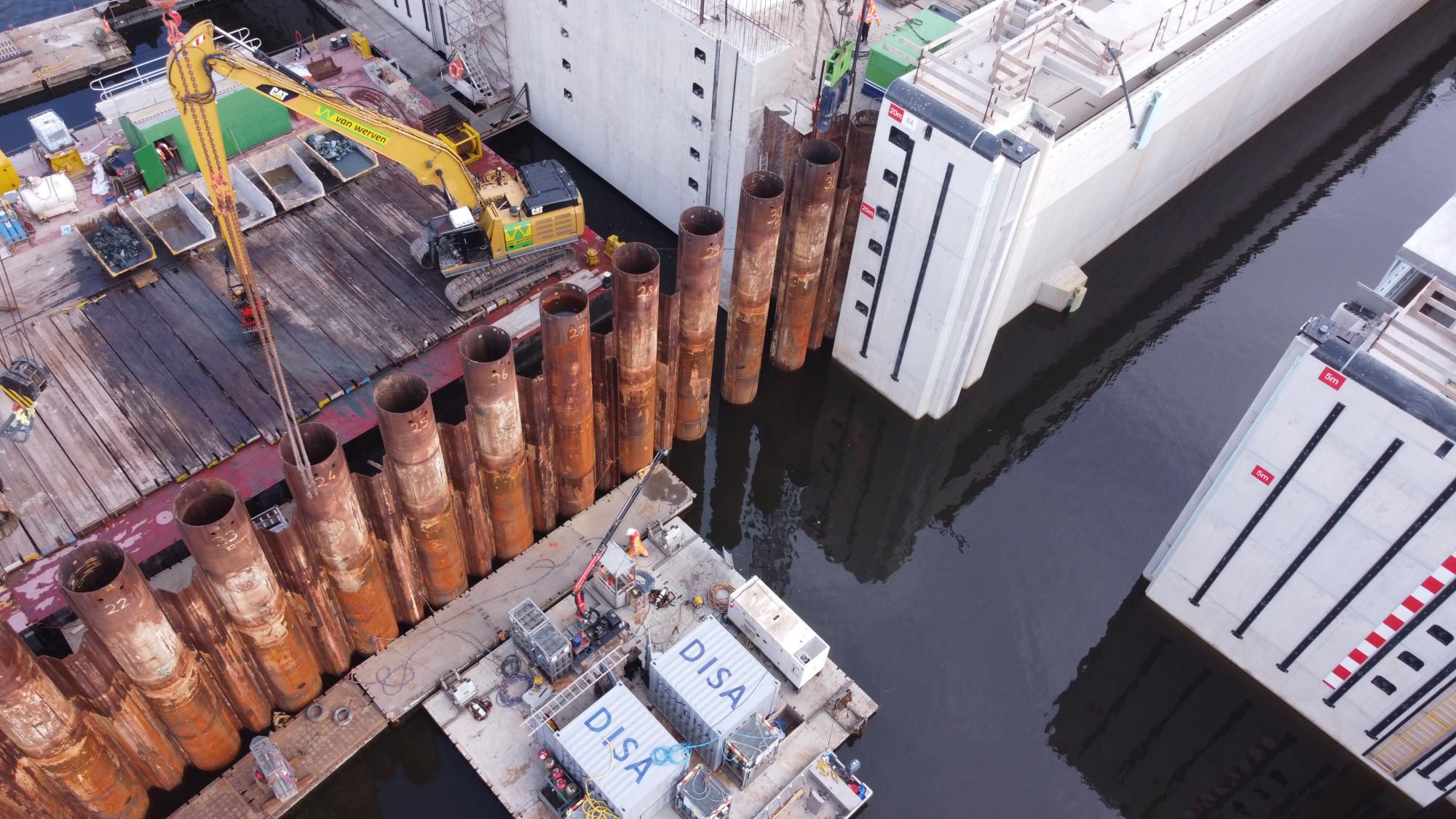
SPECIALIZED WORK 15 METERS UNDER WATER AT LOCK TERNEUZEN
Published on: 17/03/2023
Specialized work 15 meters underwater: Burning of the sheet piles.
In preparation for the entry of the bridges, the two combi walls that separate the lock chamber from the Westerschelde and the Ghent-Terneuzen Canal must be burned. This is a task that the divers of DISA International are ideally suited for. How water and fire work well together underwater? Two DISA experts, Victor Demoniere (professional diver) and Marc Veldhuizen (supervisor), explain.
Burning the two outer combi walls is a complicated process. For example, the outerhead combi wall can only be burned after the land tongue behind it has been dredged away. Therefore, part of the combi wall is first burned so that the bridges can be moved in. The combi wall consists of circular piles with sheet piles in between. To safely burn the piles, the water level on the outside of the combi wall must be at the same level as the water level in the lock chamber. This prevents currents from forming when the combi walls are removed and allows divers to work safely. "We will be working on burning the two combi walls for a total of three months," says Demoniere. He is one of the regular professional divers on this project. "It is very specialized work, which makes it so beautiful. The fact that we can burn steel with fire underwater is incomprehensible to many people. Water and fire don't go together, do they? However, we can burn steel up to a temperature of 2,500 degrees Celsius, with a maximum thickness of 15 centimeters. DISA is unique in that respect. We have specially developed tools and the right people."
SAFETY
To work safely, Demoniere always works in a team of three people, and depending on the depth of the work, a decompression tank is present. To work longer underwater, divers use a specially adjusted gas mixture of up to 36 percent oxygen and 64 percent nitrogen. For comparison, above water in the open air, this ratio is 21 percent oxygen and 79 percent nitrogen.
CHALLENGING SOLUTION
The challenge at the Nieuwe Sluis Terneuzen was that the combi wall was difficult to access, and the outer walls were heavily soiled. To make burning possible without compromising the safety of the divers, DISA devised an effective and cost-saving solution. Veldhuizen explains: "A combi wall consists of circular piles with sheet piles in between. To safely burn the wall, the divers burned a manhole of about 70 cm by 1 meter in each pile. This allowed them to burn away the elements of the wall from the inside. This is not easy considering that a pile weighs about 30 tons." According to Veldhuizen, this shows the strength of DISA International. "We have a lot of experience and knowledge in-house, as well as the right people. We work with 200 divers in both the Netherlands and internationally. Therefore, we can be deployed quickly and flexibly on projects, even those that have a longer duration."
VISIBILITY IN THE DARK
What makes the diving work in Terneuzen extra special for Demoniere and his colleagues is that they have visibility underwater. "Three-quarters of the time, we work in pitch-black water with hardly any visibility. In the Nieuwe Sluis, we could see 2 to 3 meters ahead, which was a great experience!"
